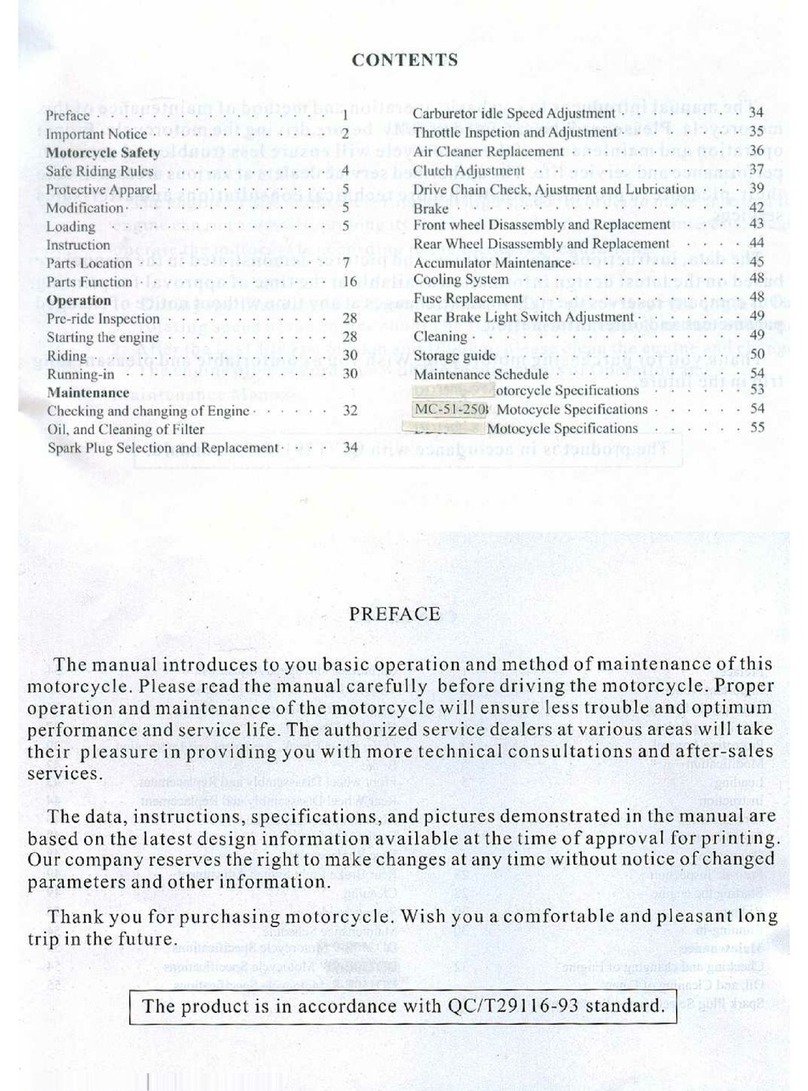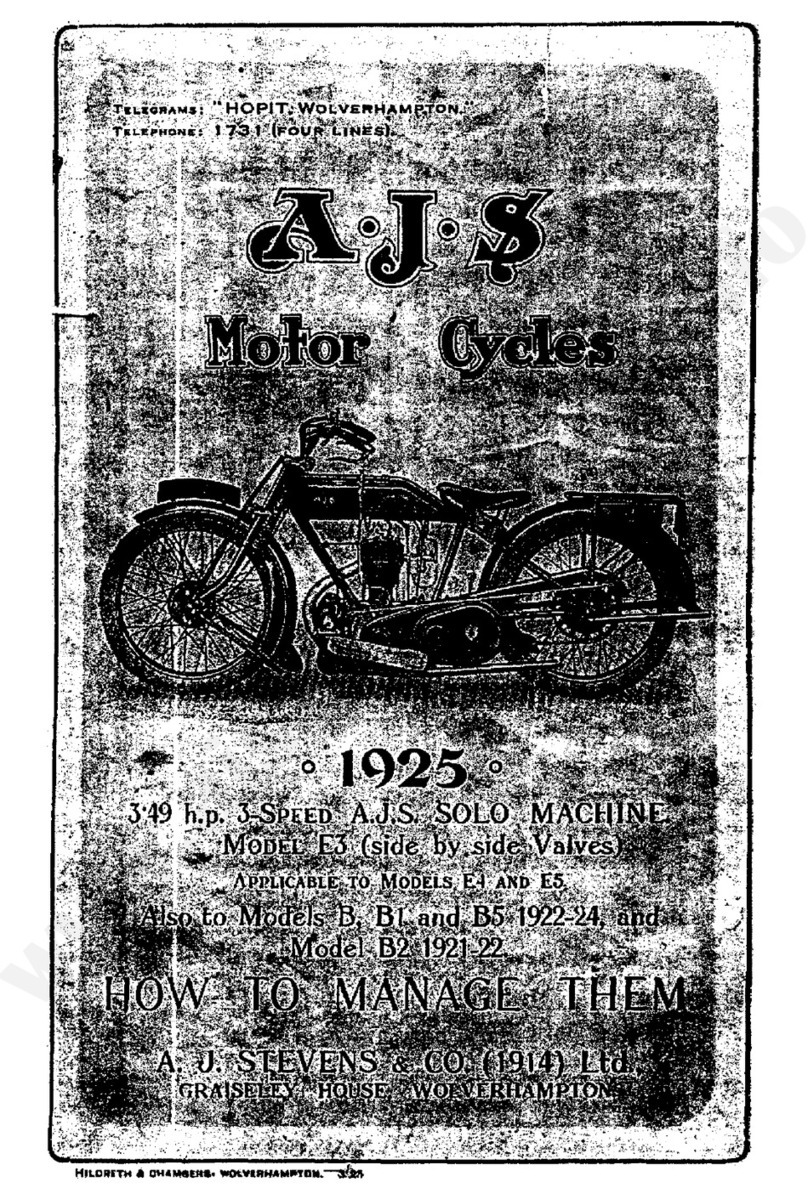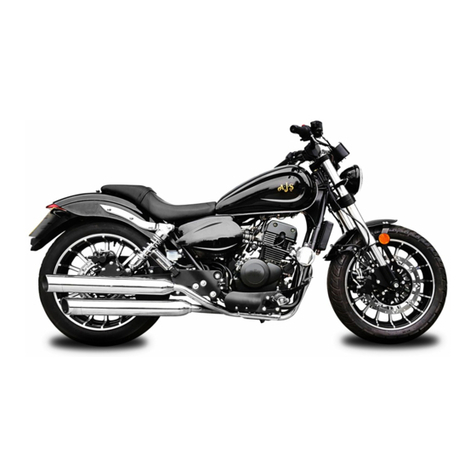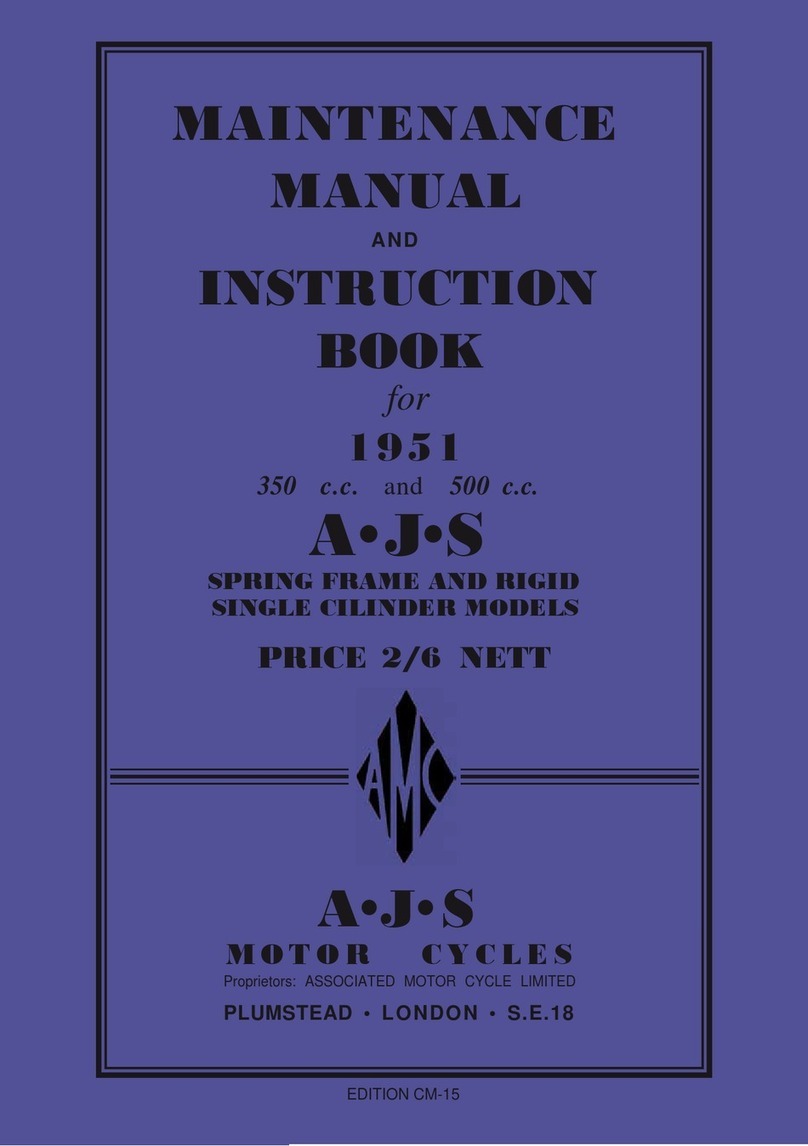
SERVICEANDOVERHAULMANUAL
FORTHE
AJS& MATCHLESS
SINGLEMOTORCYCLES
F.NEILL
by
Covering1958to1964Lightweight250c.c.and350c.c.
modelsG2G2SG2CSG2CSR1414S14CS14CSR
G58 and1957to1966Heavyweight350c.c.,500c.c.
and600c.c.modelsG3G3CG3SG3LSG3LCSG80
G80SG80CSTCS1616S16C16CS16MS16MC
16MCS1818S18CS
F.
NEILL
AJS &
MATCHLESS SINGLES 1957-1966 Lodgemark Press
Reprinted in Belgium
LODGEMARK PRESS LTD
BANK HOUSE, SUMMERHILL, CHISLEHURST,
KENT BR7 5RD, ENGLAND
TWO-STROKE HIGH
PERFORMANCE ENGINE
DESIGN & TUNING
By World famous engine designer
Bossaglia who was responsible for
most of the Italian rotary valve kart
engines including Komets and Parillas
from the very first—the V11 to the K89.
227 pages packed with information
including : Characteristics and types of
two-stroke motors. Multi-cylinder
engines, Fuel, Quantity of air necessary
for combustion. Determining the power,
The Pressure Volume diagram,
Performance, The operation of the
crank, Balance, The Stroke/bore ratio,
Third port induction, Induction through
valves, Blade type valves, Cylindrical
rotary valves, Rotating disc valves,
Transfer and scavenging with transverse
flow, tangential flow, uni-directional
flow, Counter-flow scavenging,
Position of the ports,
Bi-metal cylinders, Cylinders with
chromed bore, The piston, The gudgeon
pin, The piston rings, Constructional
ideas for the piston, The head, The
crankcase, The crankshaft, Modification
of the crank shaft assembly, Modification
of cylinder, piston and head, The
carburettor, Fuel pumps, Carburation
adjustments, Fuel injection, The magneto
The sparking plug, Ignition timing,
Electronic ignition, Lubrication,
Exhaust System, Mufflers, Exhaust
system for multi-cylinder engines,
Exhaust silencers, Test procedure,
Examples of modifications.
£4.35 (incl. insurance) Ref 290
TWO STROKES & TUNING
TWO-STROKE EXHAUST
SYSTEMS
Full details on how to calculate design
and make competition exhaust systems.
55p Ref 252 Available again March
TWO-STROKE PORTS FOR
POWER
Read how to calculate and design the
right port timing for your requirements.
55p Ref 253.
TWO-STROKE CARBURATION
AND IGNITION
Roy Bacon's third book on racing two
strokes. Vital information on carburation
& ignition.
55p Ref 281
ROTARY VALVE TWO-STROKE
KART ENGINES
All about 100cc kart engines. Includes
Arisco, B.M., Corsair, Famrel, Komet,
Parilla, Petry, Saetta, Starr, Basic
preparation, using Bleepers,
Transistorised Ignition, Tillotson carbs.
£1.10 Ref 288
IMPROVING TWO STROKE
ENGINE PERFORMANCE
Villiers, Maico, Vespa, Marcelle,
Zundapp, Itom, DKW, Lambretta.
85p Ref 135
BUILDING KARTS
KARTING FOR SCHOOLS&
YOUTH GROUPS
Organising, driving and building
low-cost karts. Forming clubs.
90p Ref 292
JAVELIN SET No. 1
Details and drawings to build a low
price kart without a tube bender.
Suitable for 2 or 4-stroke engines
without gearbox, max 5 hp & 40 lbs for
Cadet racing, fun and driver training.
Bolted-construction.
50p Ref 270
CADET SET No. 3
Details anddrawings to make afun kart
without a tube bender. Suitable for 2 or
4 stroke engines without a gearbox up to
5 hp and weighing up to 40 lbs. New
edition provides option ofbolted or
welded construction.
Any parts can be purchased ifrequired.
£1.10 Ref 293
ABOUT KART RACING
STARTING KARTING
How to start the sport explained, details
of classes, location of tracks. British
clubs and addresses. Where to buy
karts, engines fr accessories. 4th Edn.
50p Ref 286
GOING KARTING
Covers every aspect of karting, how to
buy your kart and engine, racing on
motor tracks, etc. 4th Edn.
£1.45 Ref 266
R.A.C. KART REGS 1974
All the rules and regulations governing
drivers, organisers, tracks, karts and
engines. British calendar of events,
club addresses and list of tracks.
50p Ref 130
































